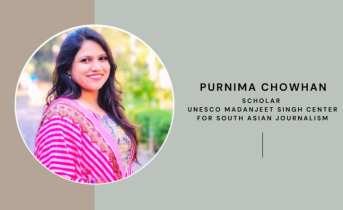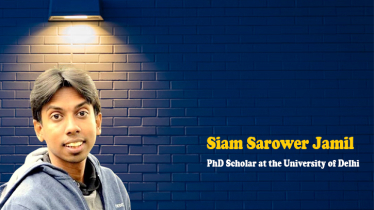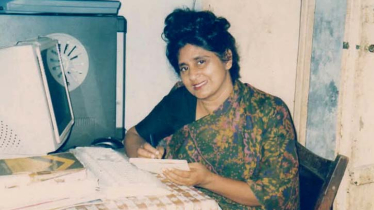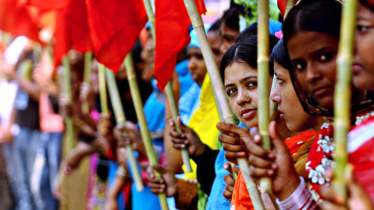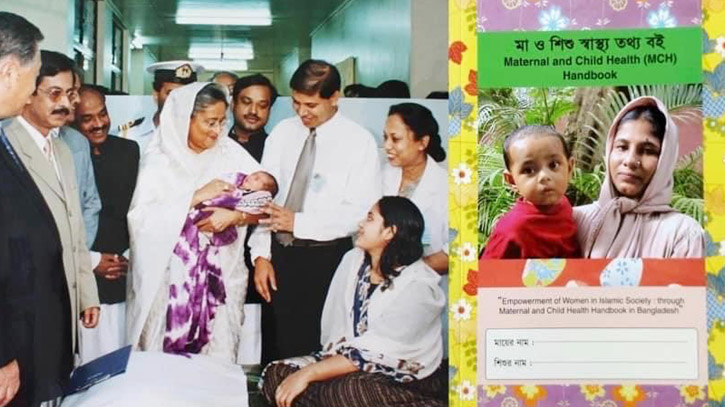
The Honourable Prime Ministers of Bangladesh and Japan inaugurated the activities of the then Azimpur Maternal & Child health Training Institute, Dhaka in 2000 . In 2002, Professor Dr Shafi Bhuiyan conducted the pilot research on MCH HandBook in the same Hospital.
What is more painful for a country and society: when thousands of pregnant mothers die due to childbirth or complications from it, or when thousands of newborns and growing children lose their lives prematurely? Every year in Bangladesh, 173 per 100,000 mothers die during childbirth or post-natal complications, and 24 per 1,000 children die between 0-5 years of age. Unfortunately, most of these deaths are due to the lack of proper knowledge and precautions on the part of the mother and her family members. What if this unwanted death toll of mothers and their children could be reduced? Today I will talk about the possibilities.
The 13th International Conference on the Maternal and Child Health Handbook is going to be held on August 24-25 at the University of Toronto, Canada. The conference chair is the pride of Bangladesh, University of Toronto’s clinical public health professor, Dr. Shafi Bhuiyan. Dr. Shafi Bhuiyan studied MBBS at Sir Salimullah Medical College in Dhaka, Bangladesh. Later, he completed his Masters in Public Health from Mahidol University, in Bangkok, Thailand, and a PhD from Osaka University in Japan. He completed his education with an MBA from the Toronto Metropolitan University. Before starting his teaching career at the University of Toronto in 2012, he worked as a scientist at Osaka University for almost ten years.
The Maternal and Child Health Handbook programs originated in Japan after the World War II. The Handbook has information on the care of the mother during pregnancy, delivery and post-delivery, the rules to be observed, and the things to be done. All of this is to support pregnant woman or her family in preparing for a safe delivery. The Handbook also acts as an ultimate guide for the parents by including information to help in the healthy survival and growth of their children from birth to five years of age. There is a table for recording the health problems of the mother and child at various times, so that it can be useful in other treatments later in life. In Japan, this mandatory Handbook of information and records for pregnant women has contributed to the reduction in maternal mortality rate to 3.4 per 100,000 and the infant mortality rate to 1.7 per 1,000. Before starting to use the Handbook these rates were 167.5 and 7.7 respectively. This unprecedented success has not only sustained Japan's health sector, but also increased women's empowerment and economic prosperity.
Over time, the usefulness of the Handbook has spread from Japan to many countries around the world. Currently, 43 countries are using the book in various scales to protect the lives of mothers and children. The dreamer that directed the circulation of the Mother and Child Health Handbook in Bangladesh is Dr. Shafi Bhuiyan. In 2002, while studying at Osaka University, Dr. Shafi Bhuiyan collaborated with his PhD supervisor Professor Dr. Nakamura Yasuhide to start implementing Maternal and Child Health Handbooks to expectant mothers on an experimental basis at the then Azimpur Maternal and Child Health Training Institute in Dhaka. This initiative was in partnership with the Ministry of Health and Family Welfare, Government of the People's Republic of Bangladesh, and funded by Japan. The results of this medical study showed that the mothers who used the Handbook had relatively more frequent antenatal checkups, significantly fewer antenatal, delivery & postnatal complications, and higher rates of healthy newborn births, compared to those who did not use the Handbook. Amazingly, the maternal and infant mortality rates were also less among Handbook users as compared to non-users.
Dr. Bhuiyan said that the main reason for the high maternal and child mortality rate in Bangladesh is due to the lack of proper knowledge fom the mother and her family regarding pregnancy, childbirth, and childcare. Also, there are certain social restraints and prejudice of the women preventing them from taking control of their health and the health of their child. By using the Maternal and Child Health Hand book, the pregnant mother will get proper guidance on how to take care of herself and her family. Dr. Bhuiyan mentioned that while working with mothers and children he had seen many girls go to their parents' houses before delivery for comfort and support despite the health complex being far away from that location. This choice of the mothers, and the lack of access to timely treatment, has often led to their unfortunate death. Dr. Bhuiyan also saw many mothers losing their lives due to various social stigma. In Bangladesh and other developing countries, poverty and the lack of education has led many children to die prematurely from various diseases and malnutrition.
That is why most families need the right resources and education to care for and support the development of their newborn baby. In order to save the mother's life, the mother must be educated about her pregnancy and delivery. This will allow her to take the initiative to avoid death risks and give birth to a healthy child.
Fortunately, Bangladesh has been able to reduce this premature death of mothers and children to a large extent. The Honorable Prime Minister Sheikh Hasina received the MDG Award for the success in reducing maternal and child mortality, which is a great achievement and inspiration for us. However, there is more to do in order to achieve the global sustainable development goals by 2030. A key tool to support the reduction in mortality is the Maternal and Child Health Hand Book, which will cost approximately 50 Bangladeshi Taka. In other words, the life of the mother and her child will be protected just by 50 BDT. Dr. Shafi Bhuiyan also said that various health organizations including the World Health Organization, UNICEF, and JICA have recognized this book to use universally in all countries. If given the opportunity, he would like to continue technical assistance in the uninterrupted circulation of this book in Bangladesh.
The Maternal and Child Health Handbook can be developed and used by each country in its own language based on its maternal and child health issues, adjusting to their social and cultural context. The benefit also is that everything is illustrated with colorful pictures, which are helpful for mothers with limited education. Remember that, every life is precious. Only a healthy mother can give birth to a healthy child and those healthy children are the Bangladesh of tomorrow. If only 50 Taka can ensure the healthy life of a mother and her child, and if it could prevent premature death, then why delay? Now is the time...!
Dr. Mushtary Mimi, MBBS, MPH (Epidemiology) Candidate, North South University, Bangladesh. She is also Bangladesh Representative, International MCH Handbook Conference Committee.
END/TDM/MAN

